Signed for around seven million euros, Gabriel Martinelli‘s performances have already made him a prized asset for Arsenal FC’s future. The Brazilian, who is 22 years old, is now playing his fifth season in the English Premier League. His adaptability to the league under Mikel Arteta, has become increasingly noticeable over the years.
Such good performances for the Gunners are turning him into a valid option for Fernando Diniz’s Brazil, which are currently struggling in the FIFA World Cup 2026 Qualification. With stars like Neymar Jr (ex-Barcelona) and Vinícius Jr (Real Madrid) injured, Martinelli has the opportunity to shine and grab his spot in the XI of one of the most emblematic national teams of all time.
He is being monitored by two relatively young, promising technicians with some groundbreaking approaches. Generally speaking, Arteta underlies his on-possession tactics on a positional strategy, where Martinelli is critical. On the other hand, Diniz likes to give his players positional freedom to have numeric superiority in different pitch sectors.
So, in this tactical analysis, we’ll provide an analysis of Martinelli’s role while playing for Arteta’s Arsenal and for Diniz’s Brazilian national team.
Influence in Diniz’s Brazil
In a game marked by lamentable scenes in the stands of Maracanã, Brazil lost against their eternal rival Argentina and accentuated their sportive crisis. Although they lost the last two games, Martinelli has been one of the most irreverent elements on the squad, scoring against Colombia and having some good individual plays.
The Brazilian head coach, Diniz, manages his team through a main 4-4-2 where Martinelli is the left midfielder. However, as we’re going to detail further, mobility is the key in his philosophy. In a recent interview, the Brazilian prodigy claimed, “Diniz makes us calm about positioning. You need to float a lot and be close to each other”.
Let’s start with Martinelli’s role during the build-up. Brazil likes to build from the back, where André and Bruno Guimarães play a significant role in it. Yet, when the pressing is intensified, players like Martinelli, Vinícius and Rodrygo usually descend on the pitch to create numeric superiority.
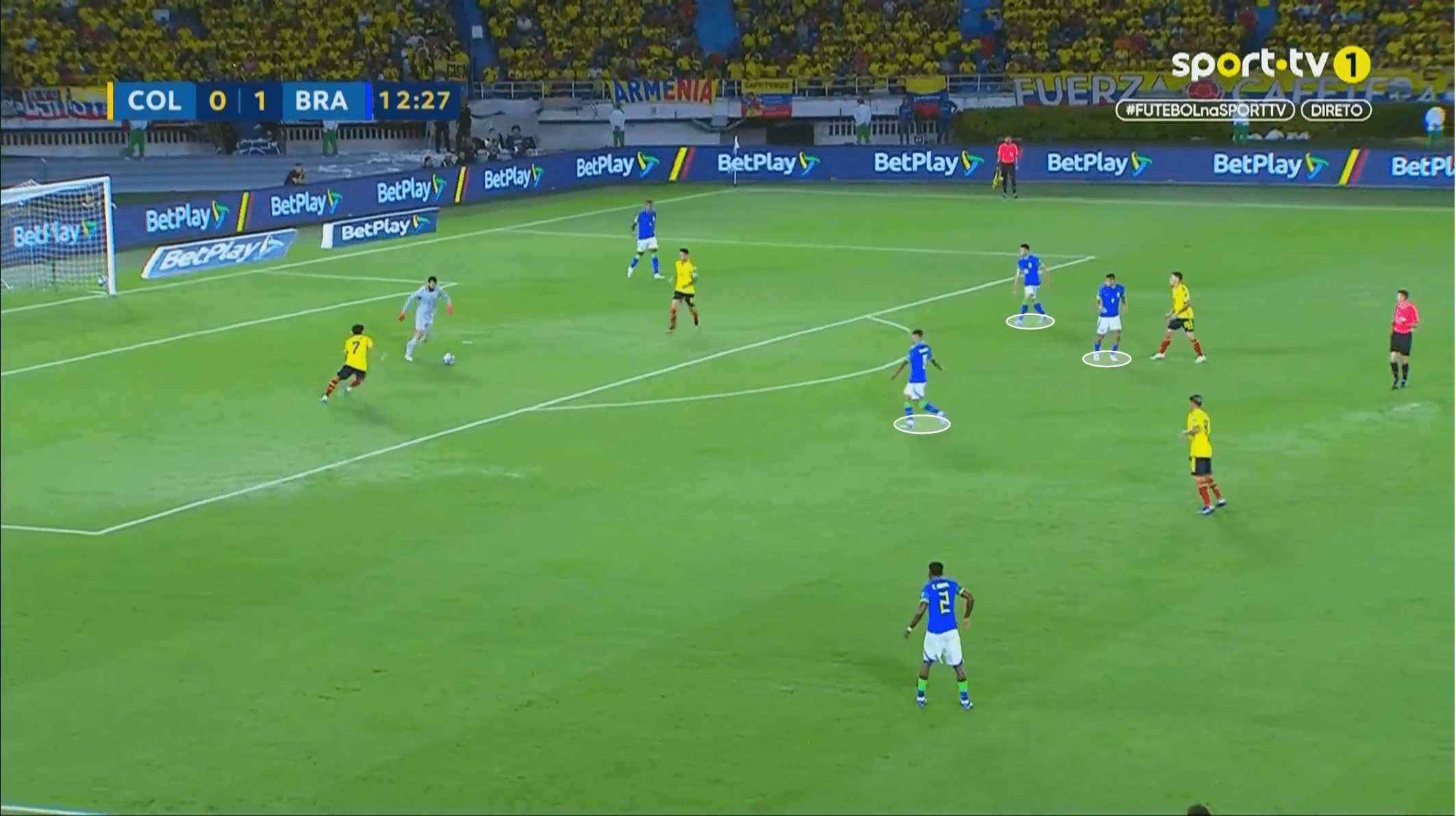
Although Martinelli has excellent vision and technique, this zone is not ideal for him due to the high risk of losing possession. We also would like to note that during this mobility, the spaces are always filled, where, for instance, if Martinelli lowers his positioning, Vini, Rodrigo, or any other player fills the void left by him.
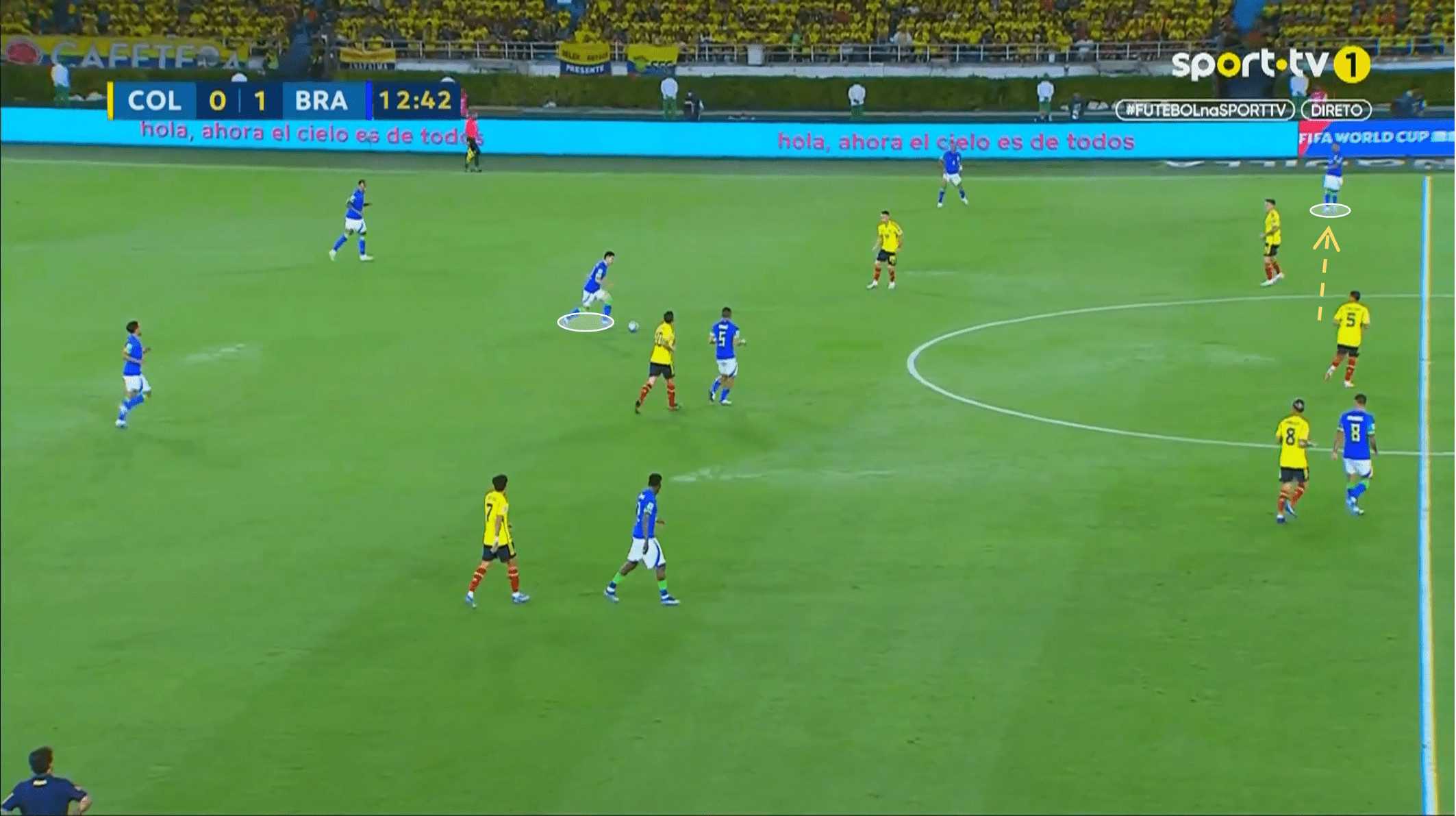
On the other hand, the opposite also happens, where, for instance, Martinelli is seen between the lines of other creative players in the wing.
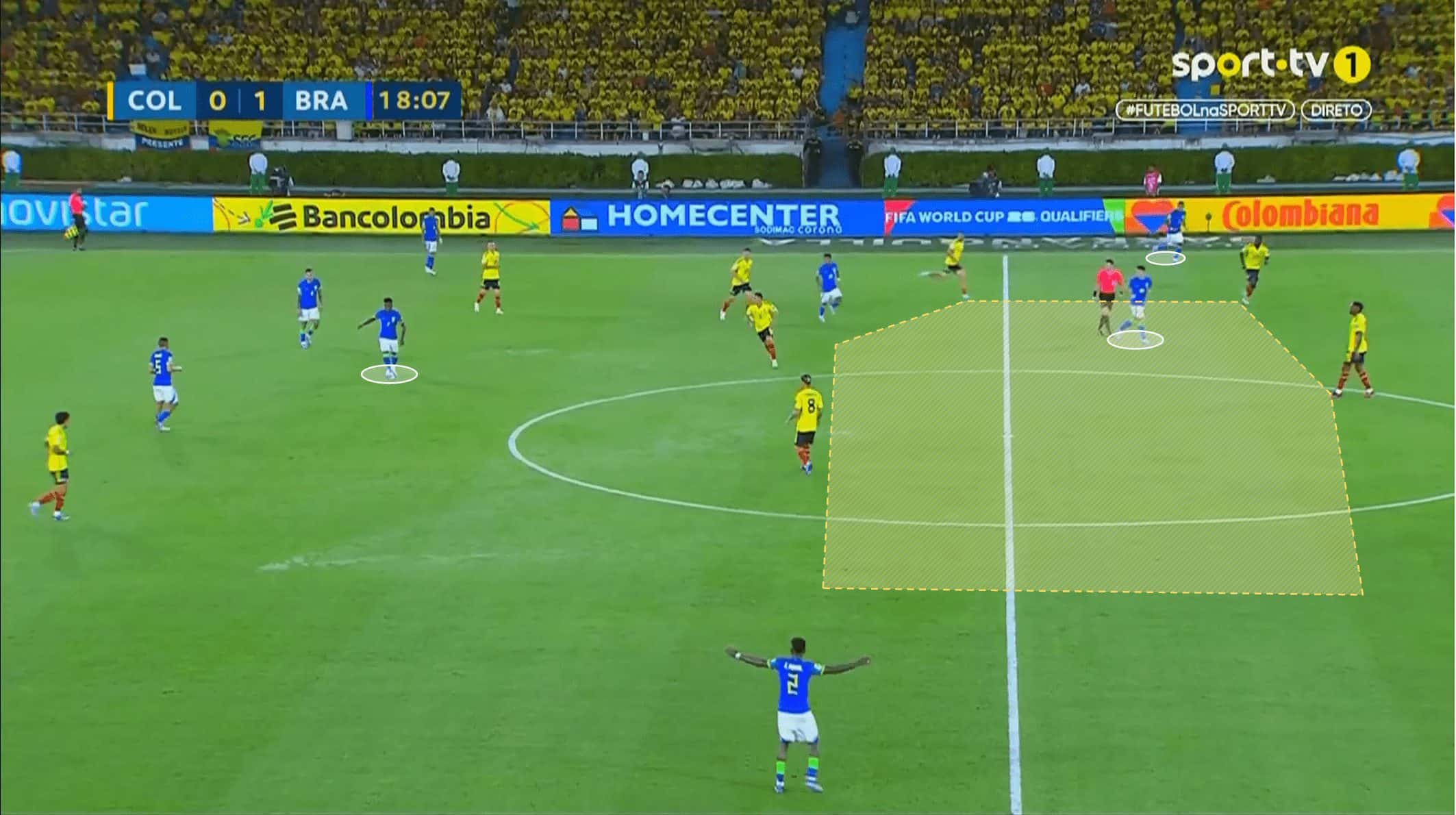
This increases Brazil’s unpredictability and creates more difficulties for the other team in preventing Brazil’s on-the-ball behaviour.
In these last games, we noted that Brazil felt more comfortable attacking through the left corridor, and the 22-year-old plays a significant role in it. Similar to what happens in Arsenal, the Brazilian likes to be wide-open so that he can both help during build-up and threaten the opposition with his dribble.

As we see it, the main reason Martinelli adapts himself so well to both Arteta’s and Diniz’s game models has to do with his capacity to understand the game and its different phases and adjust his positioning.
Moreover, we also noticed an excellent involvement between him and his other offensive teammates, especially Vini, Rodrygo and Gabi Jesus, who plays alongside him in Arsenal. A perfect example of this connectivity is the goal scored by Martinelli against Colombia, where he successfully combined with Vini until he was in an ideal zone to shoot.
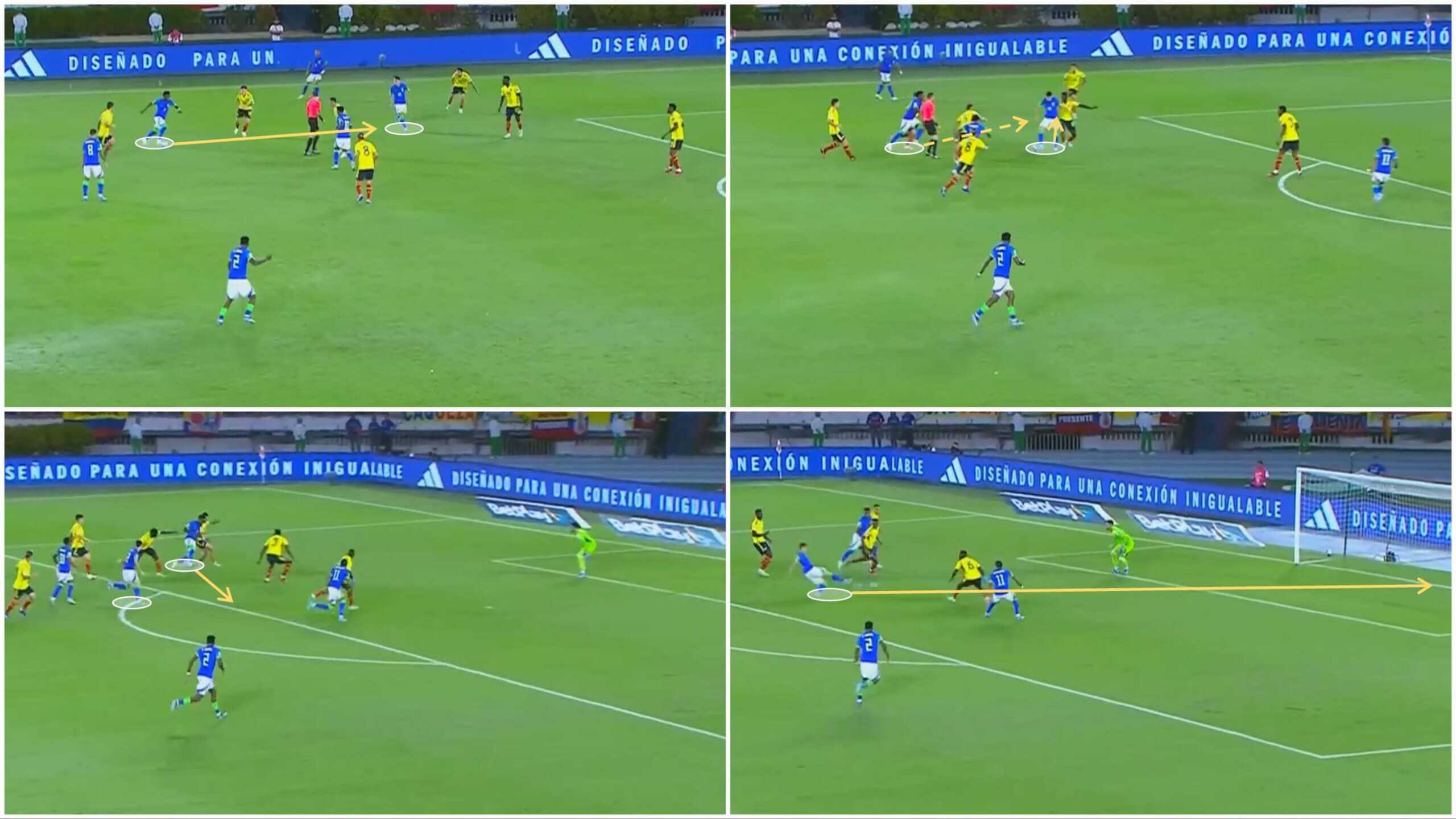
Apart from his outstanding technique and football knowledge, the Brazilian is also endowed with tremendous physical attributes, especially his explosion and pace. He takes advantage of these and uses the depth attack as an alternative and valid weapon in his game.
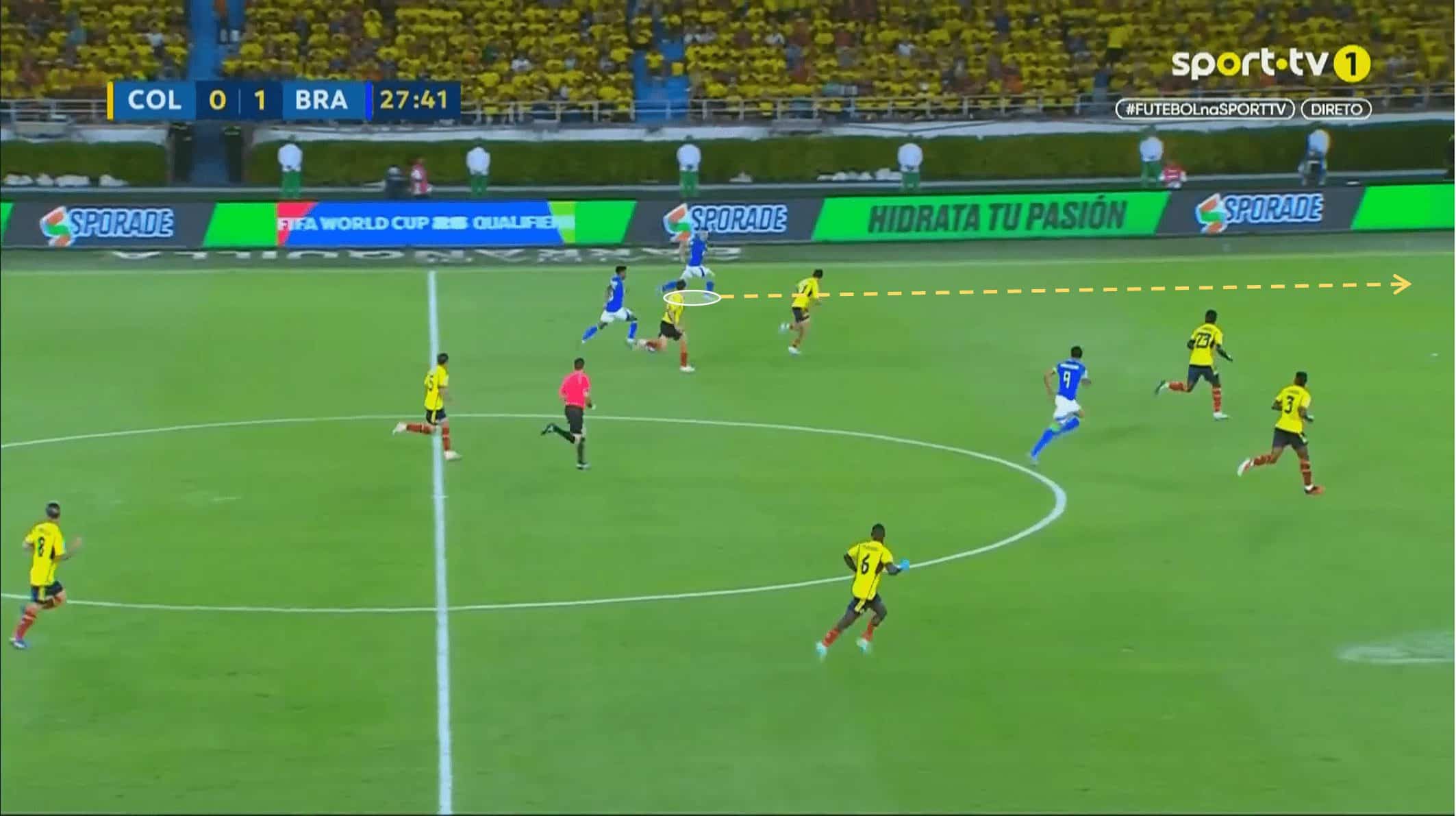
Additionally, the positional freedom inherent in Diniz’s philosophy allows him to attack his opposition’s backline in different pitch zones. In the example above, he explored the depth of the corridor, but he could also attack the space between the two centre-backs-.
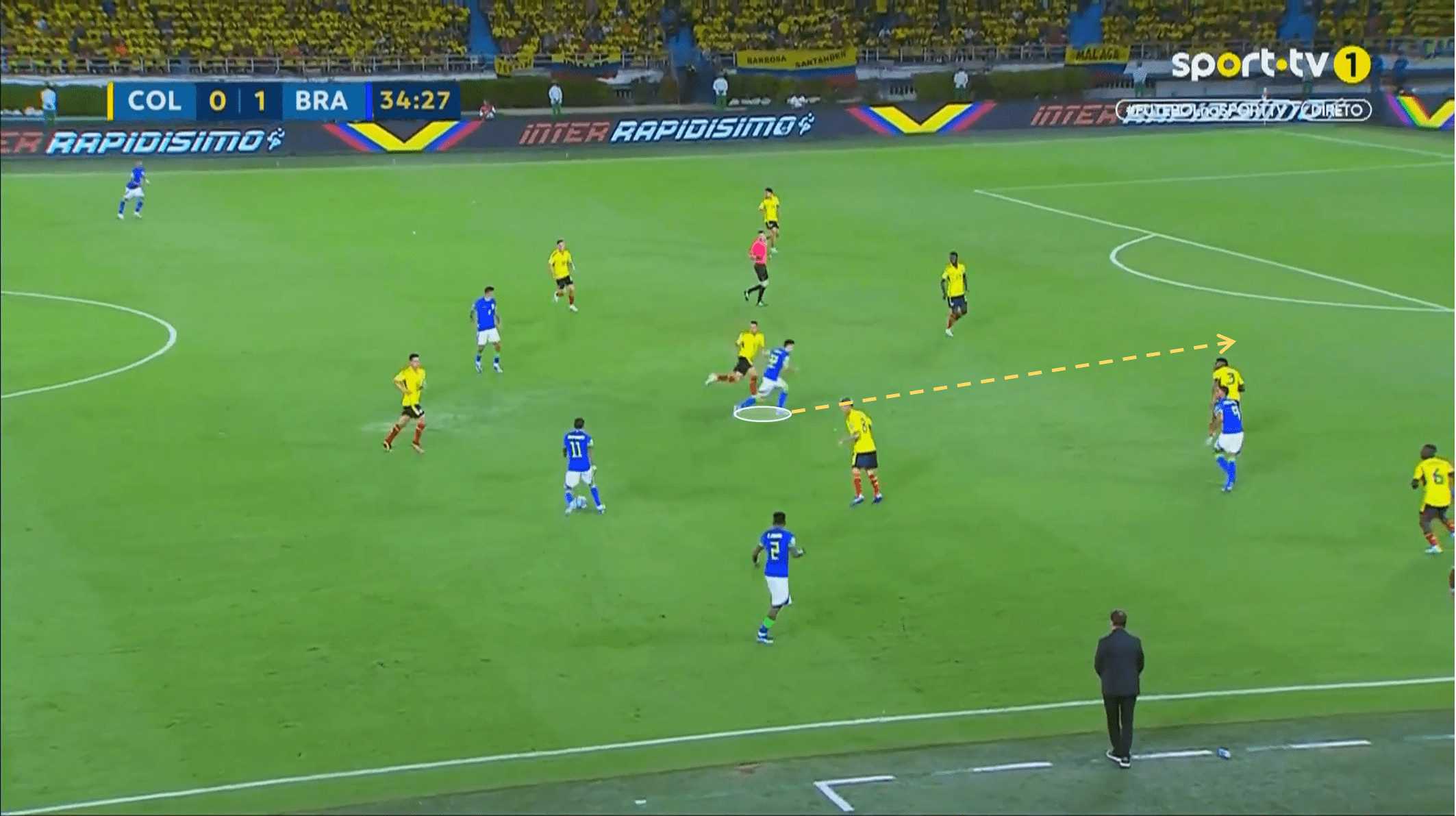
A final word for his defensive actions. In our opinion, Brazil has a high margin to improve, especially in transitions where some attackers take too long to join the defensive block. Curiously, against Argentina, they were a much more aggressive team, and they finished the first half with no significant chances conceded. However, in other disputes, they leave Guimarães and André as the two players with the burden to stop the counterattack, as visible below.
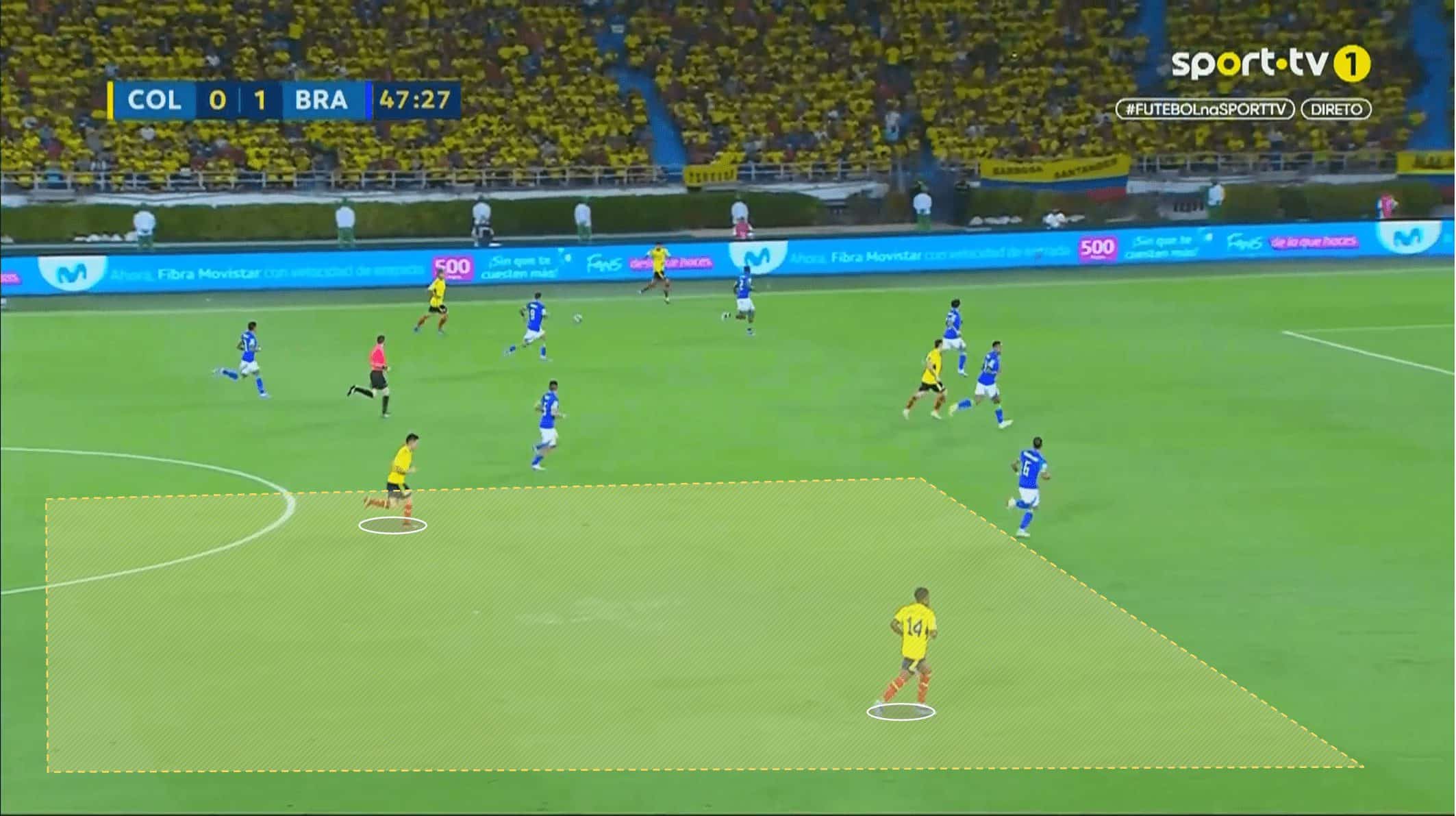
We already covered this in previous pieces, but having a cohesive team while defending is difficult if the most relevant attackers take too long to return to their team’s defensive block.
In a defensive organisation, they like to have the three defensive lines close to each other, and Martinelli is often seen defending near the left-back while marking the winger.
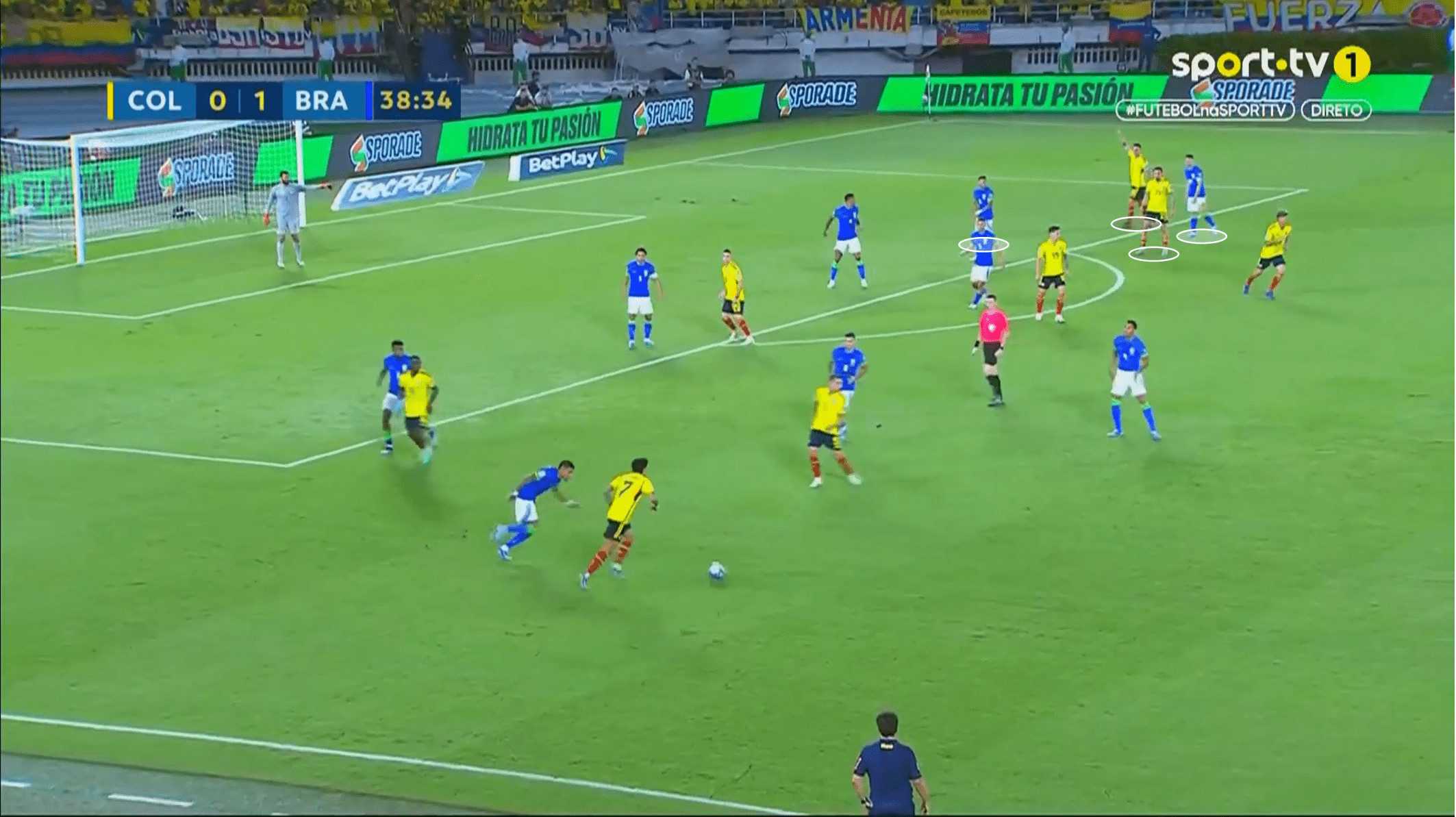
Arsenal
On possession, the Gunners normally attack in a 3-3-4 or a 3-2-4-1 if Declan Rice and the offensive midfielder (Havertz or Fábio Vieira) explore the space between the lines.
Under Arteta’s command, Martinelli has a more anchored position. He is the only player who gives his team width by the left flank since Oleksandr Zinchenko often acts as an inverted full-back.
With another fantastic player on the right corridor, Bukayo Saka, one of Arsenal’s on-the-ball intentions is to attract opposition on one side, leaving the winger open on the opposite side. This play can be conducted through short passes from well-positioned teammates or through a long ball.
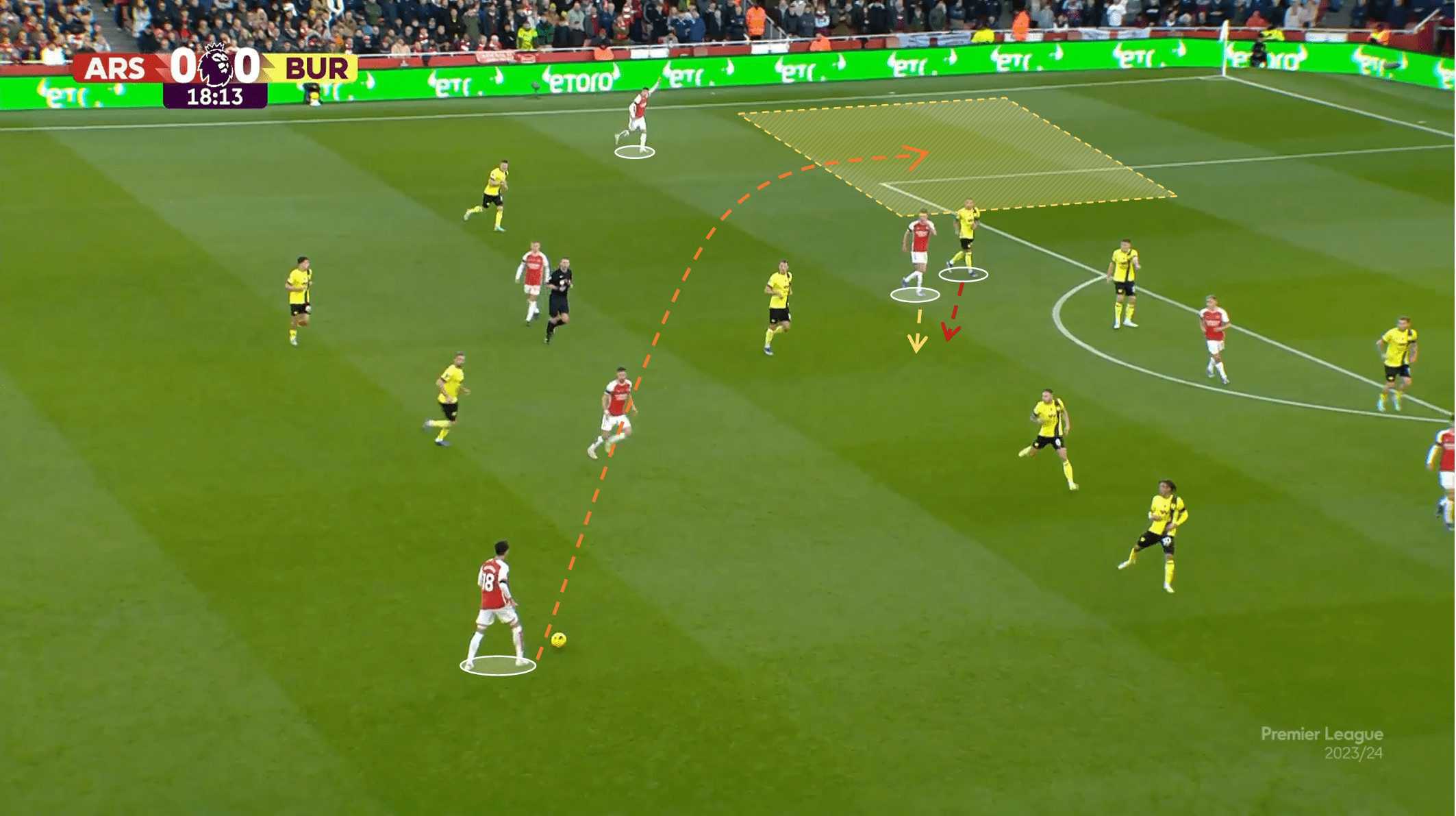
If these actions are successful, a dangerous individual play is on the verge of taking place. Martinelli’s dribbling is one of his most used features (ranked in the 82.3rd percentile on dribbles being made per 90 minutes) while attacking, and in these situations, he likes to face his opponents while carrying the ball.
As we stated before, the Brazilian crack has good tactical know-how, and he can conciliate this with his technical attributes. A perfect example of this is related to the last paragraph; when he dribbles towards the opposition, he can decide well most of the time, where he splits his decision-making into four main categories: dribble past the opponent, back pass, cross or shooting. Proof of Martinelli’s effectiveness while attacking could be seen in the following stat: he ranked in the 96.1st percentile on accurate passes per 90 minutes.
Due to the low-block teams Arsenal commonly face, Martinelli is on numeric inferiority on the wing, so what he does in this situation is very clever. The Brazilian faces the opponent in a 1v1 situation, and when the opponent is finally attracted, he makes a back pass so that his teammate can take a first-touch cross or shoot at the box’s entrance.
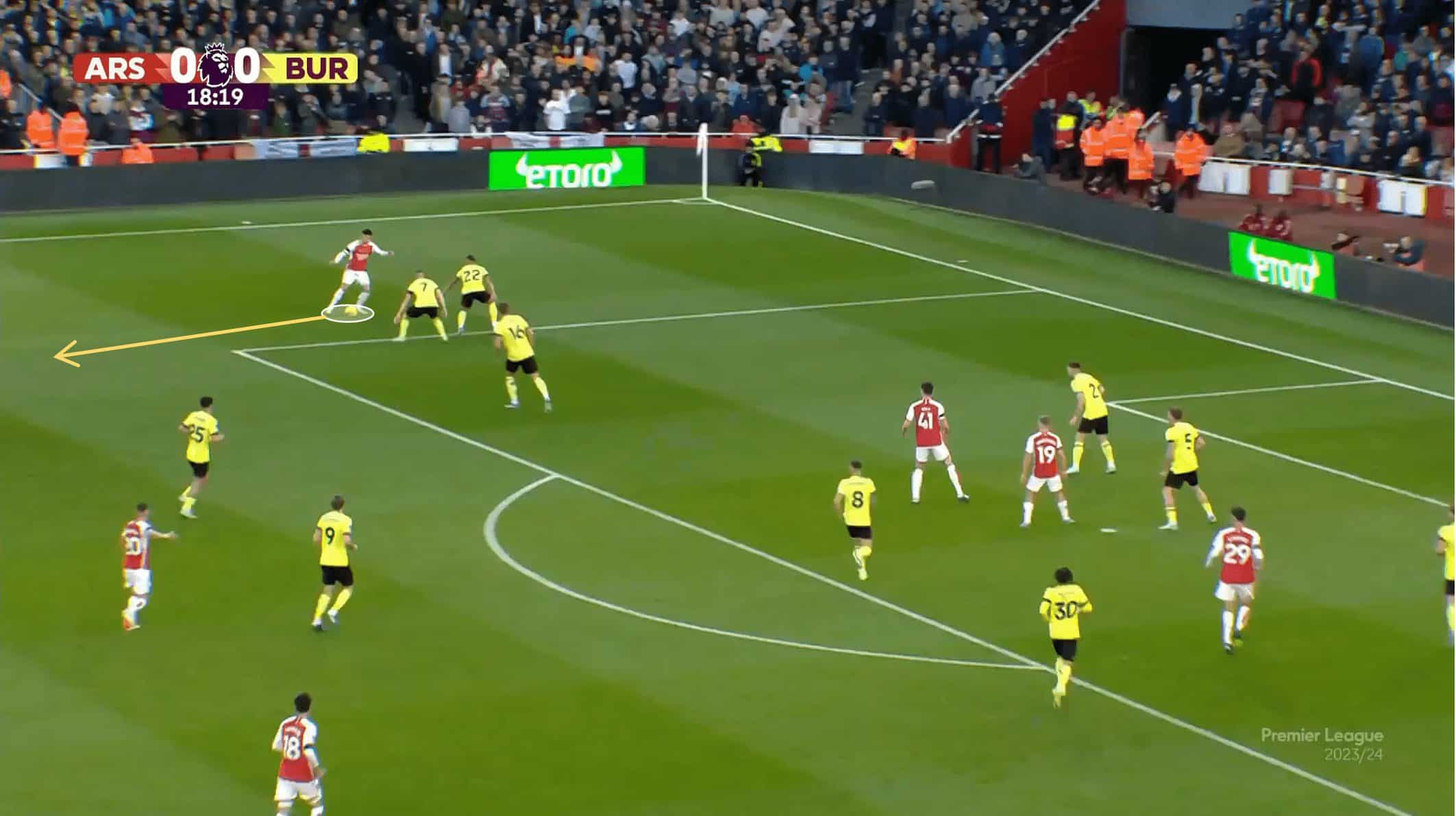
This typical Martinelli’s movement is also observable while performing for Brazil, yet the spaces are not as correctly filled as Arteta’s Arsenal.
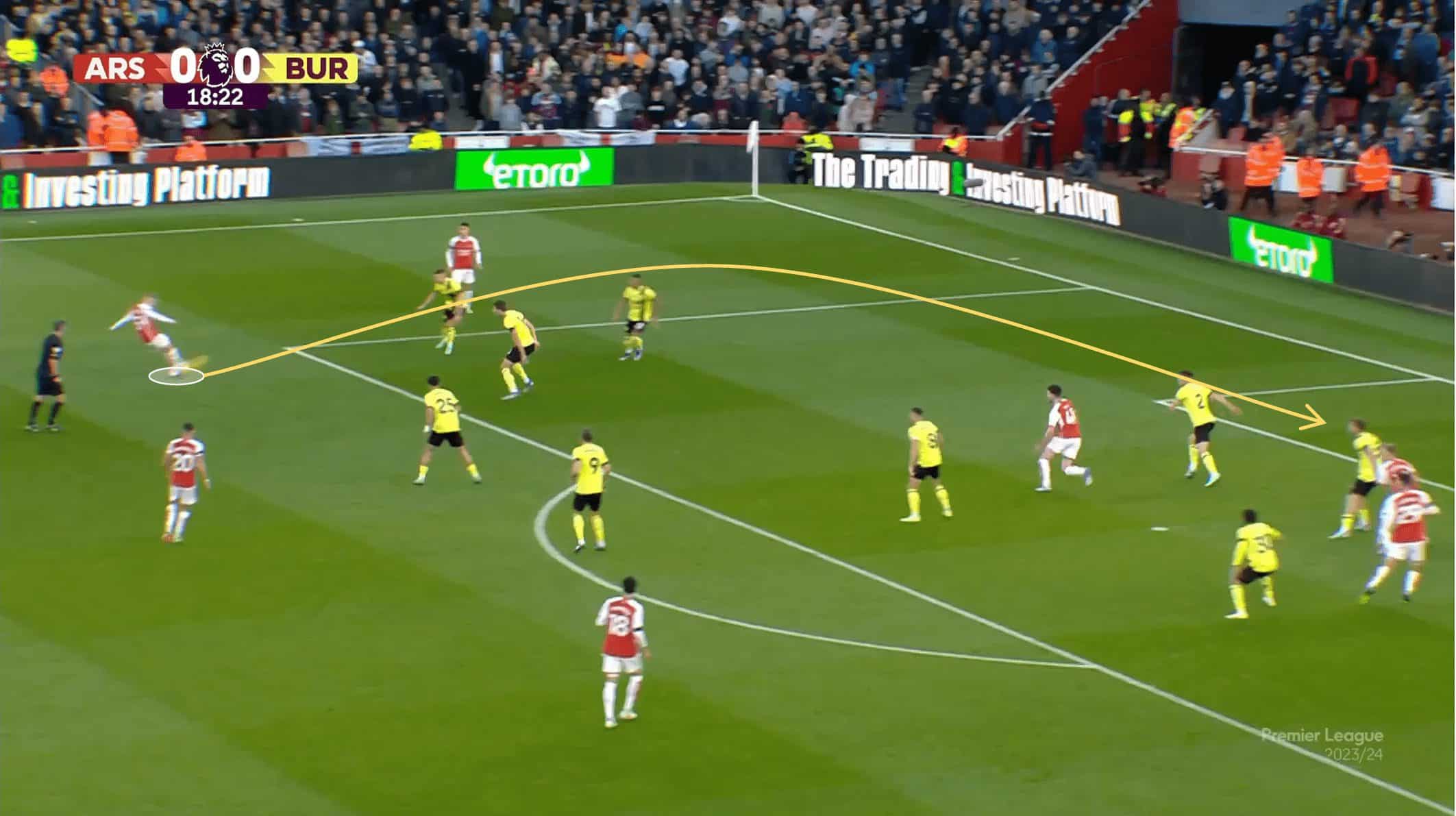
While playing with some big sides like Manchester City, Liverpool, or Tottenham Hotspur, the left winger will probably act as a left midfielder to support the centre-back, who will most likely struggle during the build-up. Yet, the rest of the matches in Arsenal’s calendar are against teams with a defensive approach, and as it goes, Martinelli often positions wide and deep.
With him high on the pitch, he forces the opposition’s block to descend on the pitch, and more space is available to create around the midfield zone. He also uses fascinating mechanisms to eliminate the opposition’s marking, such as counter-movements, where he fakes a depth attack and quickly returns to receive the ball.
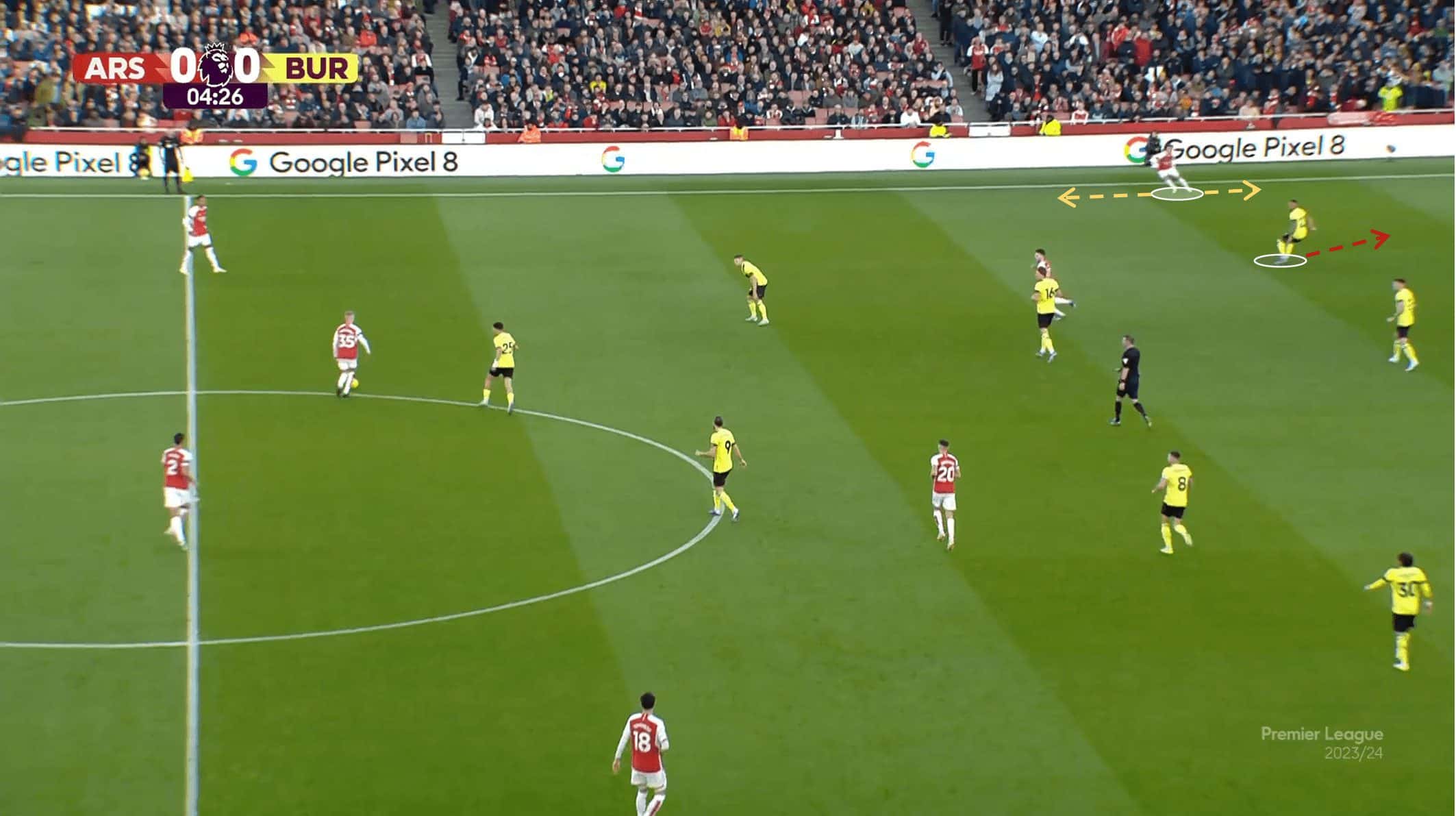
Just like we said, Arteta’s game plan is a more anchored game than Diniz’s offensive strategy; however, they have some similarities, especially in space and occupation. For example, if one central midfielder chooses to move to the wing, Martinelli is forced to look for a less concentrated space to receive the ball.
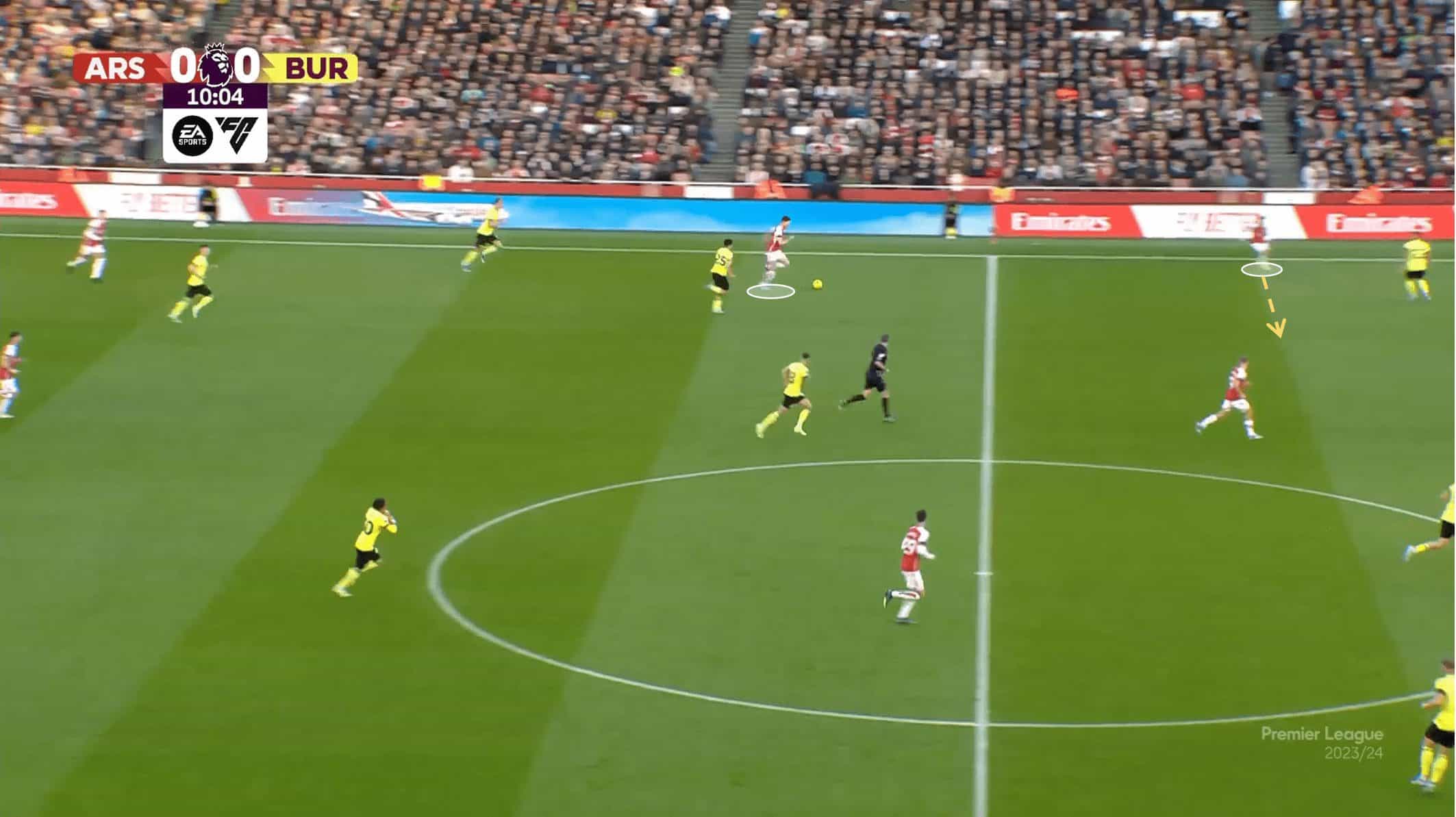
As we see it, neither a full mobile nor a completely anchored game plan will bring significant successful results, but a hybrid one where a situation like the above takes place.
During our analysis, we also noted that this Brazilian winger is a crucial player for Arsenal’s counterattacks, utilising his speed and dribbling abilities.
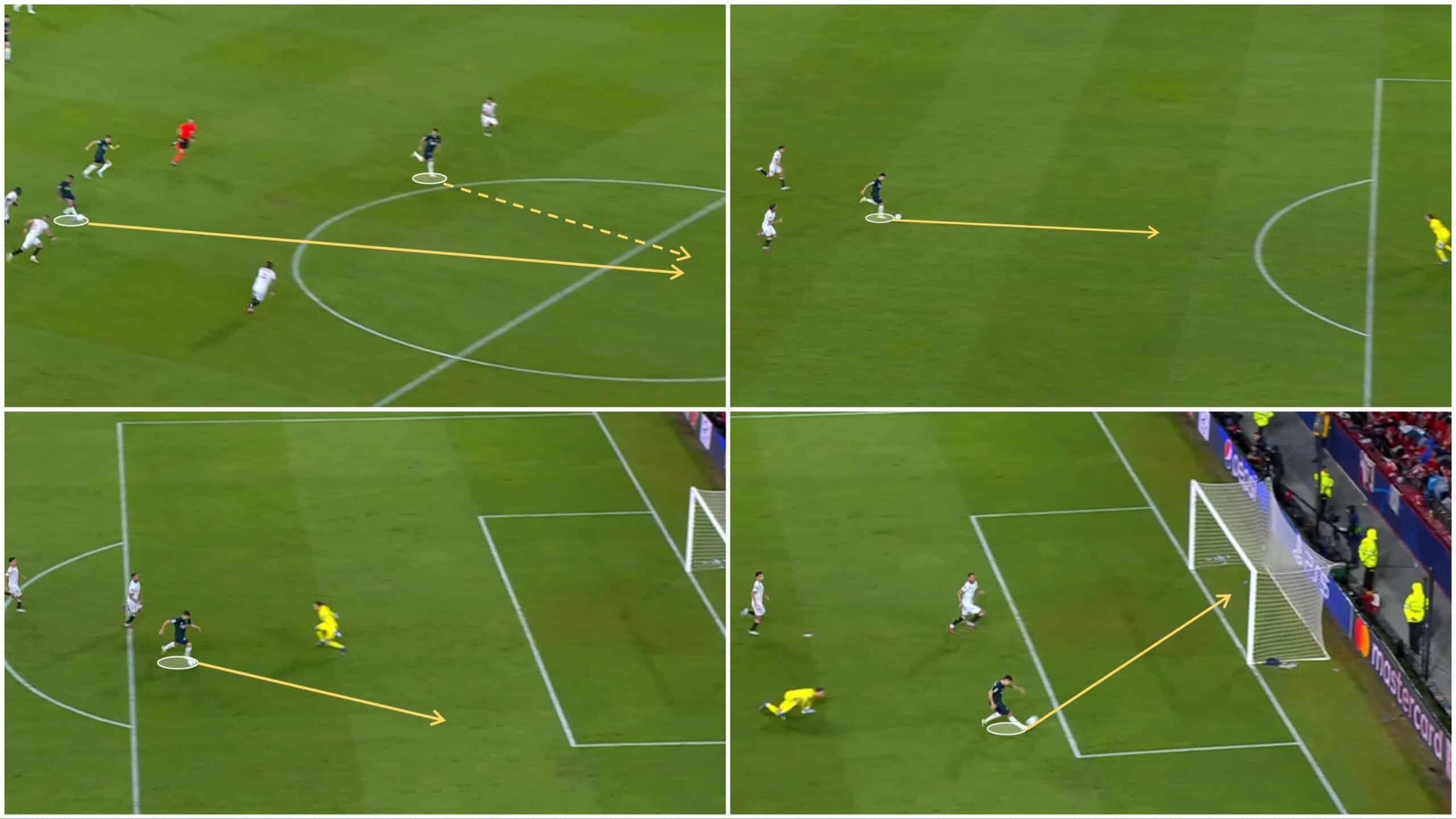
Finally, in contrast to his behaviour in Brazil’s national team, Martinelli’s aggressiveness and intensity at the moment the ball is lost is considerably higher. This is not only because he’s playing in the most competitive league in the world but also due to Arteta’s demands on such game phases.
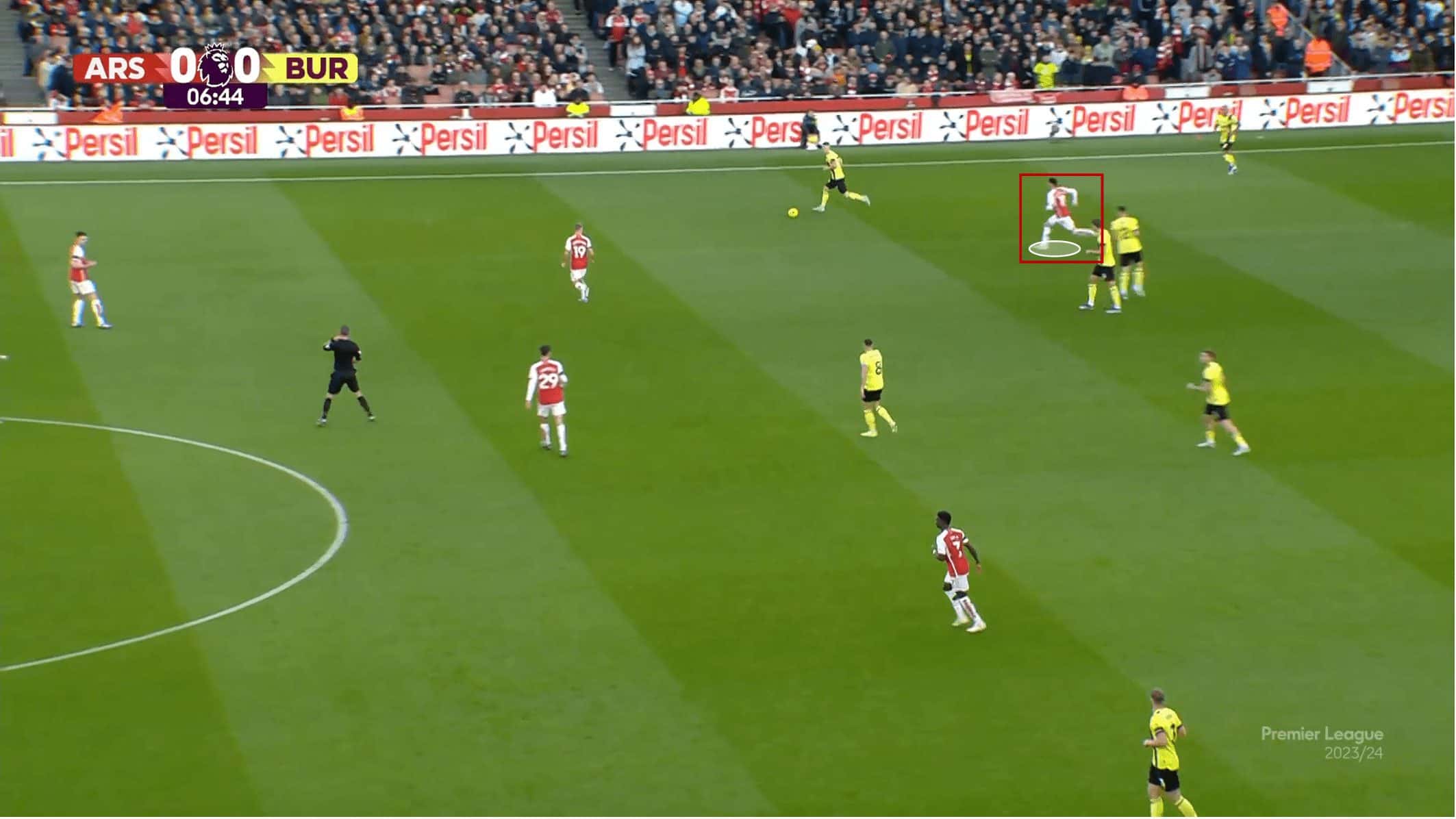
Conclusion
It’s impossible to talk about Gabriel Martinelli without relating him to Barzil’s future, a top-talented player whose pretensions of being considered an initial player are becoming increasingly severe.
In this scout report, we first went over his role and importance in Brazil’s most recent performances, in which he scored their only goal. Under Diniz, we see mobility around the ball carrier to create numeric superiority as their ground rule, and Martinelli has been an essential player in it.
Apart from these positional aspects, Martinelli has also shown good offensive involvement with the other Brazilian cracks, their national team’s attacking guarantee.
Under Arteta, Martinelli’s positioning is far less mobile, and he’s been crucial by ensuring the width and upsetting opponents on the flank. He is usually positioned deep, which allows him to be closer to the goal and, therefore, create dangerous situations in association with his teammates, especially with the midfielders.
We also mentioned the disparity in terms of his defensive transition in Arsenal and in Brazil’s national team, which can be related to the competition he’s inserted.
To conclude, we would like to leave another Martinelli’s statement: “They have different ways of playing. Last game, I never had so much freedom in terms of creation. Diniz has given me confidence.”.






Comments